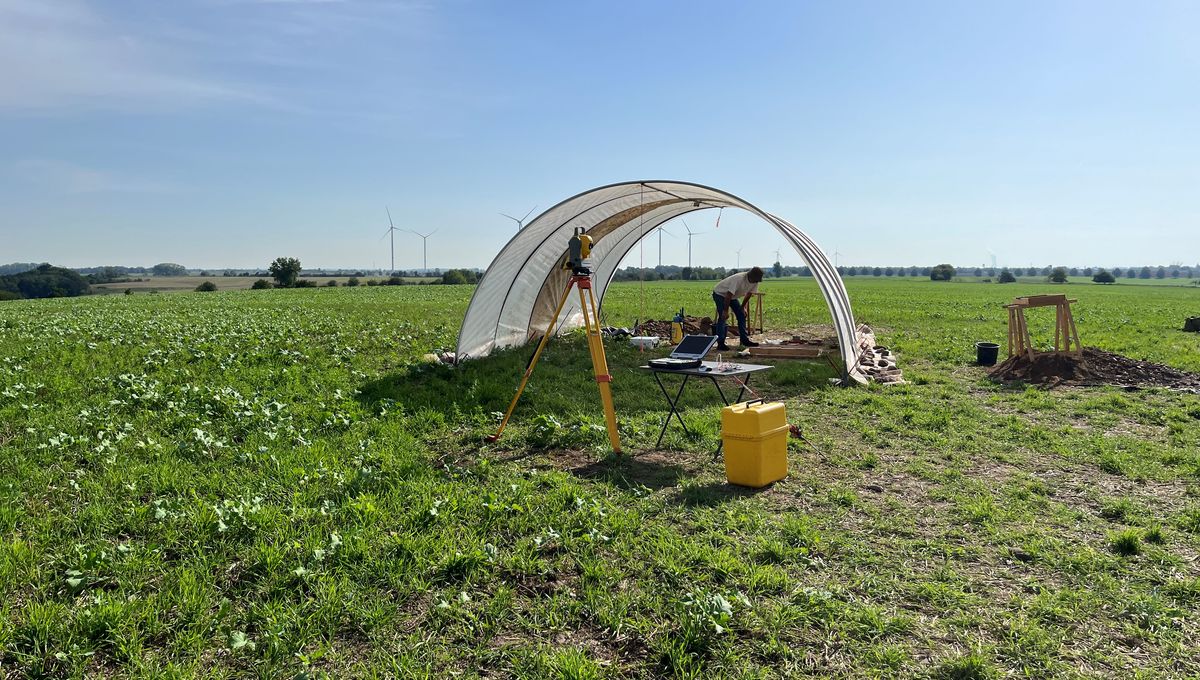
Archaeologists are currently excavating a Mesolithic hunting site that is contemporaneous to the famous “Shaman of Bad Dürrenberg” in Dehlitz, Germany. The circa 9,000-year-old hunting camp is located about 6 kilometers (3.7 miles) from the shaman’s grave, which sheds light on the lives of people living at the time.
In 1934, the remains of a woman and a child were accidentally unearthed during construction work at a spa in Bad Dürrenberg. The woman and child, thought to have been 6 to 12 months old, were buried together in an upright, sitting position and surrounded by red clay.
Surrounding the woman were the remains of various extraordinary items, including a headdress made of bones, arrowheads, painting equipment, hunting tools, and the remains of several animals – deer, turtles, and cranes – that would have lived in the area.
These artifacts suggest the individual had special significance, but the red clay and the headdress revealed her to have been a shaman among her people; a person who mediated between the living and the spirit world.
The Shaman’s remains are now housed at the Museum of Prehistory in Halle, Saxony-Anhalt, in a space that is meant to resemble the forest environment the woman would have lived in at the time. The location where her grave was found is one of the richest Mesolithic sites known in Central Europe, which is why the ongoing excavation of the near-contemporary hunting site is so exciting.
Over the last five years, the voluntary archaeologist, Wolfgang Bernhardt, has collected more than 6,000 stone artifacts from the site near Dehlitz. This is an exceptionally large amount for a site with artifacts from this period.
Since August this year, archaeologists with the State Office for Heritage Management and Archaeology Saxony-Anhalt have been investigating the site. They have, so far, created eight excavation squares, each a meter-squared (around 10.7 square feet) in size, which extend down to the geological subsoil. They have found numerous stone implements and fragments of antlers and bones in the excavated layers.
The team has also found a large number of microliths, small stone tools usually made of flint or chert, which were likely used as arrowheads. However, very few scrapers have been found at the site, which suggests it was not permanently occupied and was probably used as a periodic hunting camp.
Given their close proximity, similarities, and sheer richness, the hunting camp and the site of the Shaman’s burial may well be connected.
“For the first time, the Dehlitz camp provides a more detailed insight into the living environment of the Mesolithic hunter-gatherers in the region around Bad Dürrenberg,” said Dr. Oliver Dietrich from the State Office for Heritage Management and Archaeology, Saxony-Anhalt, in a statement.
For those interested in finding out more about the Shaman of Bad Dürrenberg, the museum housing their remains has produced a documentary series.
Source Link: Archaeologists Unearth 9,000-Year-Old Campsite Near The Famous “Bad Dürrenberg Shaman"